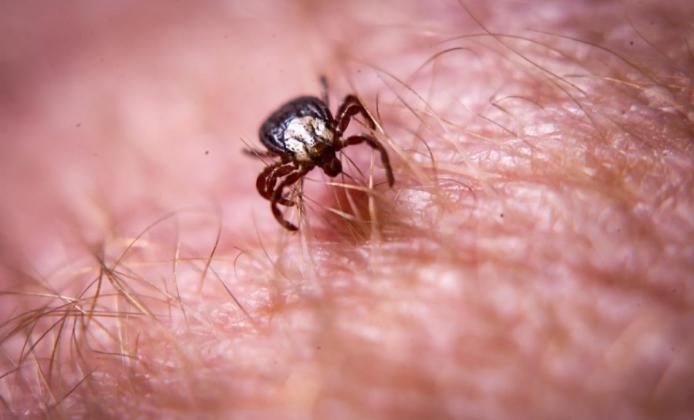STILLWATER, Okla. – Oklahomans are noticing they’re inadvertently bringing home tiny, uninvited hitchhikers this summer, Oklahoma State University experts said.
Those guests are insatiable, and their numbers are peaking.
“In Oklahoma, activity by the Lone Star tick usually peaks in May, but with all the rain we’ve had it slowed them up a little,” said Dr. Susan Little, professor in the OSU College of Veterinary Medicine. “American dog ticks and Gulf Coast ticks are both active right now, too.”
The sight of a parasite latched securely onto another creature’s skin – whether human, pet or livestock – is disturbing enough, but ticks also carry the potential for infection and illness. The two most concerning tick-borne sicknesses in Oklahoma are Rocky Mountain spotted tick fever and ehrlichiosis, which typically peaks in June and July, Little said. Ticks also can sometimes transmit dangerous viruses.
Diseases caused by ticks have been on the rise across the country, more than doubling between 2006 to 2016, according to the federal Centers for Disease Control and Prevention.
Justin Talley, professor and Oklahoma State University Extension entomologist confirmed reports of deer ticks and other species across the state are on the rise.
Talley provided some prevention tips:
Know where the enemy lurks – Ticks prefer high humidity and tall vegetation, so even manicured paths near trees and tall grasses deserve caution.
Think about layers – Light-colored clothes make tickspotting easier, and ticks like to snuggle into constricted places such as waistlines. If possible, invest in a commercially available, chemical repellant such as DEET.
Check and double-check – Reapply protections throughout the day and search head-to-toe one more time before going to bed.
As for those ticks that manage to sneak past security measures, Talley and Little both said removal requires patience: grasp the insect as close to the skin as possible and slowly pull it away. Do not wiggle or jerk it out, because bug parts left behind can cause infection.
When checking for attached ticks, it’s helpful to know that each species tends to pick a favorite body area. Lone Star ticks are most often found below the waist; American dog ticks are typically found on the scalp.
Owners of outdoor pets often face problems similar to agricultural producers with livestock. Not only do ticks carry illness, too many of the parasites will sap an animal’s blood and energy over time and make it more vulnerable to other health issues – Little said she’s seen extreme examples of neglect in which the animals needed blood transfusions to recover. Her published research shows Oklahoma consistently ranks first in the nation when it comes to dog infections by ticks.
OSU experts urged pet families to check for ticks regularly and administer commercially available preventatives, which can be applied topically or orally. Chemically infused collars are available now that can last for as long as eight months, Little said.
“It’s such a simple step to take to prevent so many problems ticks cause,” she said.
People are most likely to notice the blood-sucking phase of any particular tick species. After adults feed enough, the larval and nymph stages develop later – in the case of Lone Star, that tick species doesn’t actually settle down until late August or September, quietly preparing for next year.
Additional tick guidance is available online from OSU Extension.

